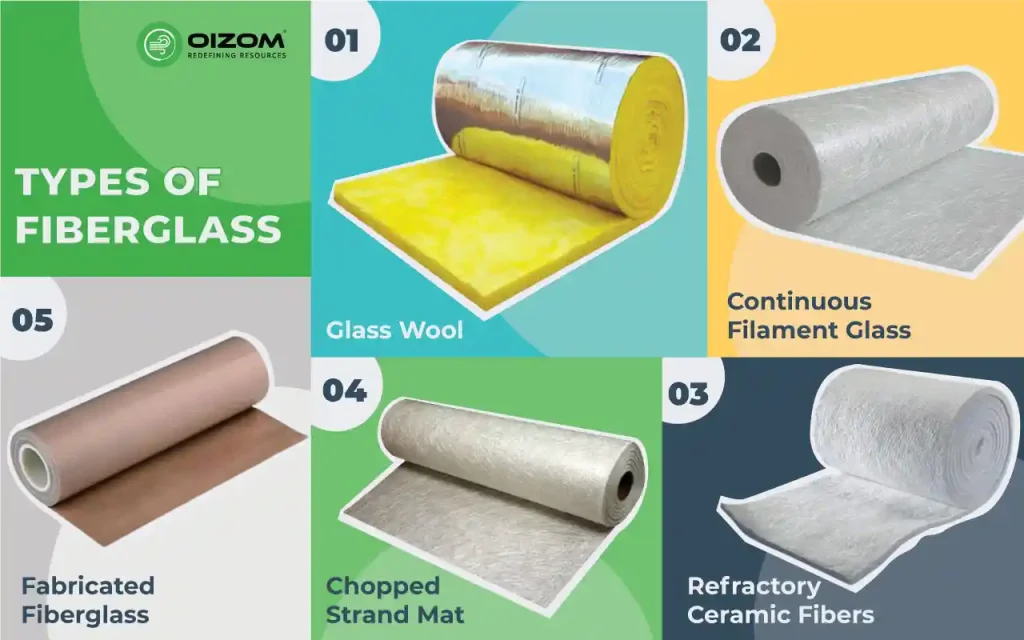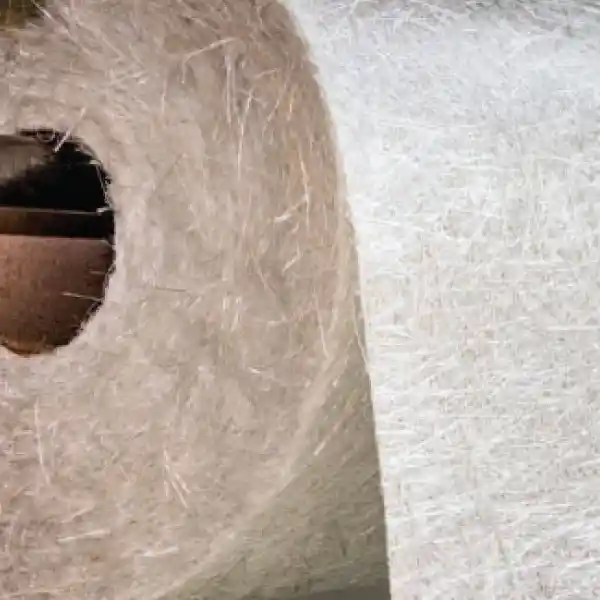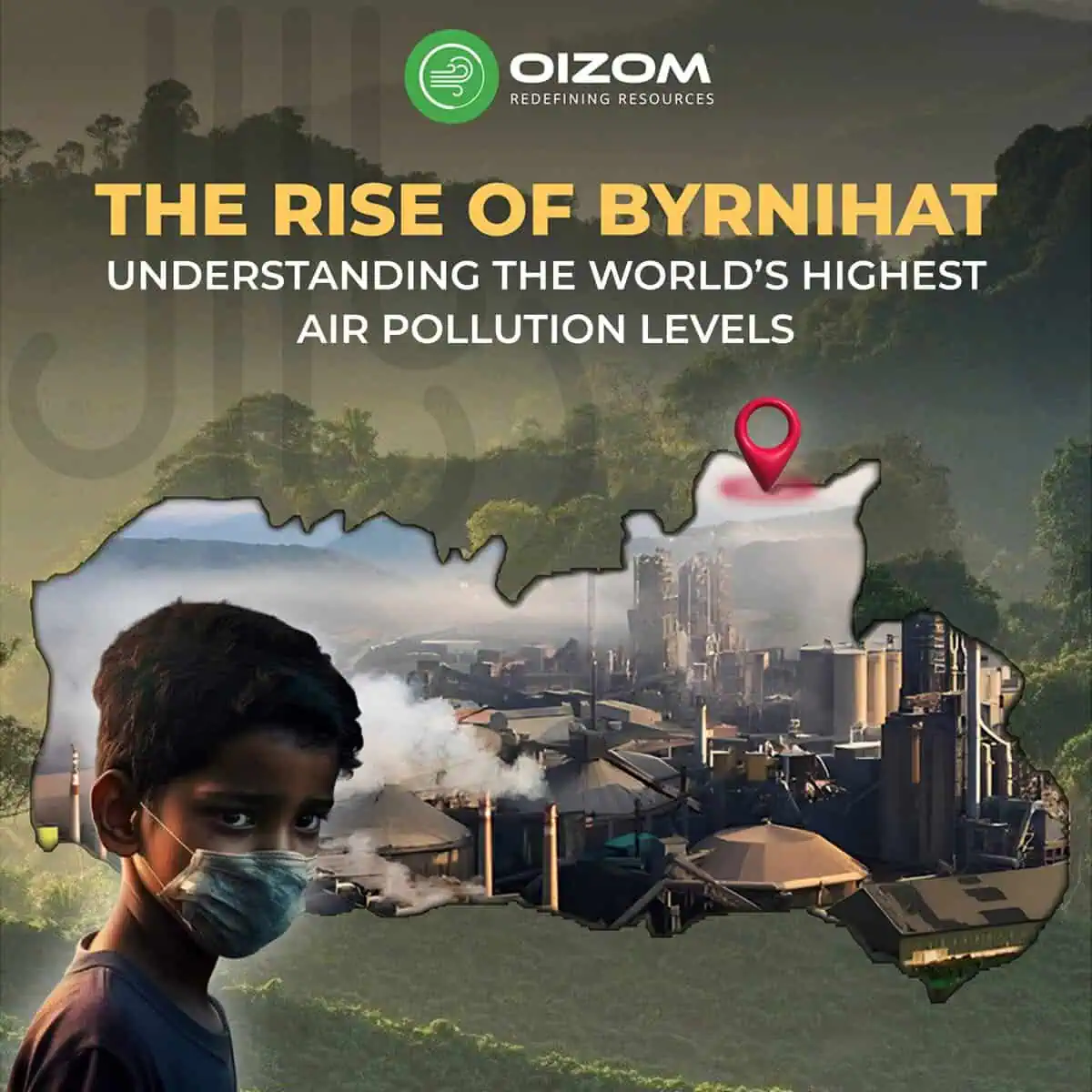As we face the complex environmental concerns of the twenty-first century, the job of environmental engineers becomes increasingly essential. Their knowledge is advantageous and necessary for safeguarding our planet’s resources, public health, and a sustainable future. As a result, environmental engineering is more than just a career or a discipline; it is a vital light of hope and action in an increasingly complex and challenging world.
Types of Fiberglass

Fibreglass, a composite material comprising fine glass fibres embedded in a resin matrix, is renowned for its durability, strength, and lightness. These attributes render it an exceptionally versatile material, suitable for various applications across various industries, including construction, insulation, transportation, and manufacturing. The adaptability of fibreglass stems from its different types, each tailored to meet specific requirements and applications.
Glass Wool
One common fibreglass type is glass wool, primarily utilised for thermal and acoustic insulation. Glass wool is characterised by its long, thin glass fibres, creating a fluffy texture. This texture is instrumental in trapping air pockets, effectively resisting heat transfer, making glass wool an excellent insulator.
Continuous Filament Glass
Another type is continuous filament glass fibreglass, which consists of straight strands of glass fibres. This form is particularly valued in applications that require reinforcement in composites and in the manufacturing of fabrics, owing to its high tensile strength and stiffness. These properties make continuous filament glass ideal for applications that demand structural integrity.
Refractory Ceramic Fibers
Refractory ceramic fibreglass is a more specialised type designed to endure high temperatures. This makes them suitable for industrial applications like furnaces and boilers, especially in sectors like ceramic manufacturing where resistance to heat and chemical attacks is crucial for operating in extreme environments.
Chopped strand mat
fibreglass, comprising randomly oriented glass fibres bound together by a resin binder, offers a cost-effective and versatile option. It is frequently used in boat building, automotive manufacturing, and other areas where moderate strength and flexibility are needed.
Fabricated fiberglass
It refers to fibreglass processed into specific shapes or configurations, such as tubes, rods, and panels. These forms are tailored for specialised applications, providing customised properties for unique use cases.
Each fibreglass type brings unique properties, making the material incredibly adaptable and indispensable in many industrial and commercial applications. This versatility and adaptability of fibreglass underscore its significant role in modern manufacturing and construction, contributing to innovations and advancements across various sectors.
Current Scientific Classification
Recently, the International Agency for Research on Cancer (IARC) completed a review of the more than 100 chemicals, occupations, physical agents, biological agents, and other agents that it has classified as carcinogenic to humans (Group 1; IARC classified es agents as carcinogenic to humans [Group 1], probably carcinogenic to humans [Group 2A], possibly carcinogenic to humans [Group 2B], not classifiable [Group 3], or probably not carcinogenic to humans [Group 4]).
The understanding of fiberglass, particularly glass wool fibers, has evolved significantly. Initially, in 1987, the International Agency for Research on Cancer (IARC) classified fiberglass as “possibly carcinogenic to humans” (Group 2B). However, after decades of extensive research and evaluation, this classification was updated in 2002 to Group 3, meaning that fiberglass is “not classifiable as to its carcinogenicity to humans.” This reclassification reflects the strong body of evidence, including large-scale epidemiological studies, showing that fiberglass insulation does not pose a cancer risk to humans.
IARC Classification of Glass Wool Fibres
Glass wool fibers, a fiberglass type, are included in the Group 3 classification by IARC. This decision is based on comprehensive research, including studies in humans and animals, which consistently demonstrate that these fibers do not cause cancer. The classification of Group 3 does not indicate any suspicion of cancer risk; rather, it signifies that current evidence does not support a link between exposure to these fibers and cancer in humans. Reinforcing the conclusion that fiberglass insulation is safe when used as intended.
Understanding Group 3 Classification
It’s important to clarify what a Group 3 classification means. This category indicates insufficient evidence to classify a substance as carcinogenic or non-carcinogenic. In the case of fiberglass, this classification reflects that extensive studies have not shown any evidence of cancer risk in humans, particularly in occupational settings where exposure levels are higher. This reinforces the conclusion that fiberglass insulation is safe when used properly.
Implications for Human Health
The Group 3 classification of fiberglass suggests that, according to current scientific evidence, there is no reason to believe that exposure to fiberglass insulation causes cancer. Health organizations, including the IARC, National Toxicology Program (NTP), and others, agree that fiberglass insulation, when handled correctly, does not pose significant health risks. While fiberglass can cause temporary irritation to the skin, eyes, or respiratory tract, these effects do not indicate long-term health issues, and they are generally manageable with proper protective measures.
It is a common misconception that fiberglass is similar to asbestos, which is known to cause serious health issues, including mesothelioma. However, fiberglass and asbestos are chemically and physically different, and fiberglass does not share the same health risks as asbestos. The extensive research and classification decisions by major health organizations support the conclusion that fiberglass insulation is safe and does not cause cancer.
Based on extensive scientific research and evaluations by leading health authorities, fiberglass insulation, including glass wool fibers, is not associated with cancer or serious long-term health effects. While it can cause temporary irritation, proper handling makes these effects manageable. The safety of fiberglass insulation is well-supported by the current body of evidence, and it remains a valuable material in promoting energy efficiency and environmental sustainability.
Respiratory Health Concerns
Exposure to fibreglass fibres poses significant respiratory health concerns, a risk attributed to the size and shape of these fibres. When inhaled, larger fibres primarily affect the upper respiratory tract, leading to symptoms such as soreness in the nose and throat, coughing, and wheezing. However, the smaller, finer fibres present a more severe health risk. These can penetrate deeper into the lungs, potentially leading to extreme conditions like inflammation of the lungs (bronchitis) and scarring (pulmonary fibrosis).
Various factors, including the intensity and duration of fibreglass exposure and individual susceptibility, influence the risk of developing these respiratory issues. Particularly vulnerable are individuals with pre-existing respiratory conditions, such as asthma, who face a heightened risk of complications following exposure to fibreglass. Respiratory symptoms often include soreness in the nose and throat, coughing, wheezing, and, in more severe cases, difficulty in breathing, marked by shortness of breath and wheezing.
Protective Measures
When working with fibreglass, a material widely used in construction, insulation, and manufacturing, it is essential to take protective measures due to the potential health risks associated with its fibres. These risks, particularly pertinent to the respiratory system, can be mitigated by implementing specific safety protocols and using personal protective equipment (PPE).
Personal Protective Equipment (PPE)
The cornerstone of safeguarding against fibreglass exposure is the appropriate use of PPE. This equipment is crucial in preventing skin and eye irritation and inhaling harmful fibres.
- Gloves: Gloves protect hands from direct contact with fibreglass fibres. Gloves designed specifically for handling fibreglass offer the best protection and should always be worn during direct material handling.
- Respirator: Respiratory protection is paramount when working with fibreglass. A NIOSH-approved N95 respirator or higher is recommended to effectively filter out airborne fibreglass fibres, thereby reducing the risk of inhalation and potential respiratory issues.
- Goggles: Protecting the eyes is equally important, as fibreglass fibres can cause severe irritation. Safety goggles with side shields are advised to offer comprehensive protection from fibreglass fibres and any resultant debris during handling or cutting.
- Protective Clothing: To minimise skin exposure, wearing long-sleeved shirts, long pants, and a headcover is advised. This protective clothing acts as a barrier between the skin and the fibreglass fibres, reducing the risk of irritation and other dermal concerns.
Ventilation
Another critical factor in minimising fibreglass exposure is ensuring adequate ventilation in the work area. Proper ventilation helps reduce the concentration of airborne fibreglass fibres, making the environment safer for those handling the material. This can be achieved indoors by opening windows and using fans or ventilation systems to circulate fresh air and disperse fibres. Choosing a well-ventilated area, preferably with natural airflow, is critical for outdoor work.
Additional Measures
In addition to PPE and ventilation, other practices can further enhance safety:
- Work Practices: Developing and following safe work practices, such as avoiding direct skin contact with fibreglass and not rubbing eyes or skin while working, is crucial.
- Hygiene: Maintaining good personal hygiene, such as washing hands and showering after handling fibreglass, helps remove residual fibres and reduces the risk of secondary exposure.
- Spill Management: Implementing proper cleanup procedures for fibreglass spills, using wet methods or vacuuming (with a HEPA filter) rather than sweeping, can prevent fibres from becoming airborne.
Expert Recommendations
Fiberglass, commonly used in various industries for its strength and lightweight properties, can pose significant health risks if not handled properly. In response to these concerns, health organisations and experts have issued guidelines and recommendations to minimise exposure and protect human health.
Guidance From Health Organisations and Experts
- World Health Organization (WHO): The WHO emphasises reducing airborne fibreglass fibre exposure to the lowest possible levels. Control measures such as using wet methods for cutting fibreglass, ensuring effective ventilation, and providing workers with adequate personal protective equipment (PPE) are recommended.
- Occupational Safety and Health Administration (OSHA): OSHA has set Permissible Exposure Limits (PELs) for airborne fibreglass fibres to safeguard workers’ health. These limits are defined as 5 milligrams per cubic meter (mg/m³) for respirable fibres and 10 mg/m³ for total fibres. Employers are tasked with monitoring air quality in the workplace to ensure these limits are not exceeded. For this, they can use real-time air quality monitors that constantly monitor different particulates in the air and give real-time reports, empowering them to take any mitigation actions.
- National Institute for Occupational Safety and Health (NIOSH): NIOSH advocates for a hierarchy of controls to minimise exposure to fibreglass. This includes strategies such as elimination, substitution, engineering controls, administrative controls, and personal protective equipment (PPE). NIOSH also offers detailed guidelines for fibreglass tasks, including insulation installation and boat manufacturing.
Steps Individuals Can Take to Minimise Potential Risks
- Identify and Assess Exposure Sources: Recognize potential fibreglass exposure sources at home and work to assess their risk.
- Use Protective Gear: Essential PPE like gloves, masks, and eye protection should be used when handling fibreglass, especially during activities that generate airborne fibres.
- Maintain Good Ventilation: Adequate ventilation in areas where fibreglass is used is crucial. This can be achieved by opening windows using fans or air purifiers.
- Proper Cleanup: Fiberglass spills should be cleaned using wet methods to prevent fibres from becoming airborne, thus reducing the risk of inhalation.
- Responsible Disposal: Fiberglass waste should be disposed of following local regulations to avoid environmental contamination and risks to others.
- Seek Medical Attention: Consult a healthcare professional if symptoms of fibreglass exposure occur, such as skin irritation, eye irritation, or respiratory issues.
Seeking Professional Advice for Specific Concerns
Consulting with occupational health and safety professionals or environmental consultants is advisable for specific concerns related to fibreglass exposure in the workplace or at home. These experts can offer customised advice and strategies based on individual situations, helping to minimise exposure and safeguard health.
Adhering to these expert recommendations and taking proactive measures can significantly reduce the risks associated with fibreglass exposure. It is crucial for individuals and organisations to be aware of the potential hazards of fibreglass and to implement these guidelines diligently to ensure a safer environment. This approach protects individuals from immediate health risks and contributes to long-term well-being and safety in settings where fibreglass is present.
Conclusion
Fibreglass is a hallmark of modern engineering, and industry innovation is valued for its adaptability, strength, and lightweight properties. It has become vital in various industries, including building, insulation, transportation, and manufacturing. As an environmental engineer, however, I am well aware of the possible health dangers of fibreglass, particularly its influence on respiratory health. This raises important considerations regarding its role in environmental sustainability and our collective responsibility to the world.
We aim to ensure that the continued use of fibreglass and materials is consistent with our more significant commitment to environmental and human health protection. Doing so protects the current generation and establishes the groundwork for long-term practices that future generations can build on. The way forward necessitates a comprehensive approach that balances the needs of our industries with the imperatives of environmental stewardship and public health. By adopting this balanced viewpoint, we can ensure that fibreglass contributes responsibly and sustainably to societal growth.
FAQs
Fiberglass exposure can cause skin irritation, eye discomfort, throat irritation, and respiratory issues. Long-term exposure to airborne fiberglass particles may lead to lung irritation, but there is no strong link to cancer in humans.
No, asbestos is significantly more hazardous than fiberglass. Asbestos fibers are known to cause lung diseases, including cancer, while fiberglass does not have the same proven long-term risks.
Yes, small fiberglass particles can become airborne and be inhaled, especially during cutting, sanding, or handling insulation materials. Proper protective measures can help minimize exposure.






